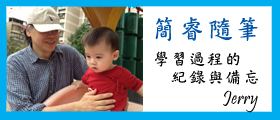KindleGen與Markdown轉換為Mobi的Kindle電子書工具:m2m.exe
自從使用Kindle當做閱讀網路小說的主要工具後,經常都要使用Calibre來將HTML檔轉換成Kindle支援的Mobi檔(參考:使用Calibre轉換TXT電子書(含目錄)並傳送至Kindle Paperwhite操作全攻略),但Calibre在轉換較大檔案時(其實也不過10多MB而已)卻要花費許多時間,少則半小時,多則40、50分鐘以上,通常就中斷轉換,直接使用文字格式了,缺點當然就是沒有目錄,降低了閱讀品質。最終搜尋到了亞馬遜用來編寫Kindle標準文件的工具:KindleGen,藉由KindleGen我們就能更方便的來控制要產生的電子書了。m2m.exe則是我寫來簡化製作Kindle電子書的小工具。

KindleGen需要的檔案
KindleGen是一個命令行指令,執行時會讀取下列檔案,依.opf檔的控制來產生Mobi檔:
| 檔案 | 檔案範例 | 說明 |
|---|---|---|
| 書籍內容的HTML檔 | mybook.html | HTML是書籍本文的內容。一本書可以使用多個HTML檔,但為方便我只使用一個HTML檔 |
| HTML使用的樣式表 | style.css | HTML檔若有使用CSS樣式就需要本檔 |
| 目錄的HTML檔 | toc.html | 形成目錄(Table of Contents, toc)的網頁內容 |
| 目錄的索引檔 | toc.ncx | Kindle 「前往」出現的選單(ncx是Navigation Control file for XML applications) |
| 封面圖片 | mybook.jpg | 封面圖片可不使用,但缺少時KindleGen較不穩定 |
| 控制組合的OPF檔 | mybook.opf | OPF是Open Packaging Format,負責將上述檔案組合起來以形成最終的Mobi檔 |
KindleGen參數
在命令提示字元視窗執行kindlegen.exe就能開始編寫書籍:
cd \util\kindlegen kindlegen.exe mybook.opf
執行過程會顯示在DOS視窗裡,若有錯誤訊息而中斷執行,則再去修改相關檔案後再次執行即可。執行時有下列參數可用:
To convert an EPUB or HTML book to the Kindle Format 8, use KindleGen version 2 or higher as described below: kindlegen filename.opf/.htm/.html/.epub [-c0 or -c1 or c2] [-verbose] [-western] [-o <file name>] Note: zip formats are supported for XMDF and FB2 sources directory formats are supported for XMDF sources Options: -c0: no compression -c1: standard DOC compression -c2: Kindle huffdic compression (recommended for large, text-heavy files) -o <file name>: Specifies the output file name. Output file will be created in the same directory as that of input file. <file name> should not contain directory path. -verbose: provides more information during ebook conversion -western: force build of Windows-1252 book -releasenotes: display release notes -gif: images are converted to GIF format (no JPEG in the book) -locale 執行時顯示訊息的語系,如en或zh (只有簡體中文)
由以上說明可知,kindlegen.exe不只接受 .opf檔,也能使用.htm、.html或.epub,但本文只使用了.opf檔。詳細的參數說明請參考 Amazon Kindle Publishing Guidelines --- How to make books available for the Kindle platform 第十頁。
NCX檔與OPF檔
上述原始檔案比較特別的是.ncx與.opf檔,二者皆為XML格式,簡述如下。
.ncx用來產生Kindle裡的目錄的樹狀控制,沒有這個控制就不像在看電子書。重要的標籤範例如下,範例裡建了三個導航點:目錄、第一卷與第一章,目錄與第一卷在第一層,第一章在第二層。每個導航點都有依序排列的playOrder與點擊後的錨點位置:
<navMap>
<navPoint class="toc" id="toc" playOrder="0">
<navLabel>
<text>目錄</text>
</navLabel>
<content src="toc.html"/>
</navPoint>
<navPoint class="welcome" id="welcome" playOrder="1">
<navLabel>
<text>第一卷 第一卷標題</text>
</navLabel>
<content src="mybook.html#SECTION_1"/>
<navPoint class="welcome" id="welcome" playOrder="2">
<navLabel>
<text>第一章 第一章標題</text>
</navLabel>
<content src="mybook.html#SECTION_2"/>
</navPoint>
.opf主要由4大部份組成:
| 標籤 | 說明 |
|---|---|
| metadata | 定義書名、作者、ISBN號碼等 |
| manifest | 書籍使用到的原始檔案,mybook.html、toc.ncx等 |
| spine | 書籍本文裡要使用的內容,一般是toc.html與mybook.html,若不想把目錄也產生在文本裡則可以toc.html刪掉 |
| guide | 點擊目錄會跳到toc.html在書籍裡的位置,點擊本文會跳到mybook.html開始處 |
mybook.opf範例:
<?xml version="1.0"?>
<package version="2.0" xmlns="http://www.idpf.org/2007/opf" unique-identifier="BookId">
<metadata xmlns:dc="http://purl.org/dc/elements/1.1/" xmlns:opf="http://www.idpf.org/2007/opf">
<dc:title>我的電子書</dc:title>
<dc:language>zh-TW</dc:language>
<dc:identifier id="BookId" opf:scheme="ISBN">123456789Y</dc:identifier>
<dc:creator opf:file-as="(未知)" opf:role="aut">(未知)</dc:creator>
<dc:publisher>Jerry</dc:publisher>
<dc:subject>我的電子書</dc:subject>
<dc:date>2015-08-29</dc:date>
<dc:description>我的電子書</dc:description>
<meta name="cover" content="my-cover-image" />
</metadata>
<manifest>
<item id="tc" properties="nav" href="toc.html" media-type="application/xhtml+xml"/>
<item id="book" href="mybook.html" media-type="application/xhtml+xml"/>
<item id="stylesheet" href="style.css" media-type="text/css"/>
<item id="ncx" href="toc.ncx" media-type="application/x-dtbncx+xml"/>
<item id="my-cover-image" href="mybook.jpg" media-type="image/jpeg" />
</manifest>
<!-- Each itemref references the id of a document designated in the manifest. The order of the itemref elements organizes the associated content files into the linear reading order of the publication. -->
<spine toc="ncx">
<itemref idref="tc" />
<itemref idref="book" />
</spine>
<!-- The Kindle reading system supports two special guide items which are both mandatory.
type="toc" [mandatory]: a link to the HTML table of contents
type="text" [mandatory]: a link to where the content of the book starts (typically after the front matter) -->
<guide>
<reference type="toc" title="Table of Contents" href="toc.html"/>
<reference type="text" title="Beginning" href="mybook.html"></reference>
</guide>
</package>
M2M:將Markdown轉換為Mobi的工具
為了方便產生KindleGen需要的檔案,我花了一兩天閑暇時間以Lazarus寫了一個小工具m2m:Markdown to Mobi,只要指定好要使用的文字檔(Markdown格式)後就能產生所有需要的檔案並叫用KindleGen產生.Mobi檔:

m2m.exe的使用方法很簡單,指定好文字檔後再依1、2、3的順序點擊按鈕就可以了。檢視Mobi檔可以下載Kindle Previewer,再把.mobi的預設應用程式設定為Kindle Previewer。
- m2m下載:https://goo.gl/dvwFiM
- KindleGen下載:Amazon的下載點;kindlegen有新版時可由此更新
- Kindle Previewer下載:Amazon的下載點
Markdown檔製作要點
Markdown文字檔編碼必須是UTF-8不帶BOM,通常只要再加上章節開頭的標題符號,第一層標題用一個半形井字號,第二層標題用兩個半形井字號,如果全文只有一層就用兩個半形井字號,如:
| 原始章節標題 | 加入標題符號 |
|---|---|
| 第一卷 京華煙雲 | # 第一卷 京華煙雲 |
| 第二十八章 最長的一天(上) | ## 第二十八章 最長的一天(上) |
文字檔裡的空行不用處理,轉出HTML檔時會全部被濾掉,每個段落在HTML裡會被夾在<p>...</p>裡。因受限於Kindle,目錄階層最多兩層。
M2M操作要點
- m2m.exe依template.ncx、template.opf等樣板檔來產生原始檔,有特殊需求時可自行修改樣板檔,讓系統產生出不同內容的檔案。
- 【第二層最多項目數】用在文本只有一層標題的狀況,系統自動依此數目插入第一層標題,例如全文有1000章, 系統會產生成 第1部份 (第二層是第1章到第20章)、第2部份 (第二層是第21章到第40章),方便章節切換。
- 〔2.產生設定檔案〕執行後最好檢視一下toc.html,以確認自已製作的Markdown章節有正確的產生出來,若看到錯誤,則可以按書籍檔名右方的編輯按鈕進入編輯,書籍檔修改後必須再按〔1.讀檔〕重新讀入新的內容
- 〔3.產生Mobi檔〕若彈出的kindlegen.exe有錯誤訊息,依訊息修改相關檔案。例如出現toc.html不為UTF-8編碼訊息,則打開toc.html找看看錯誤並修正。
- 〔3.產生Mobi檔〕進行到產生最後卻出現無法產生Mobi檔:同樣的原始檔有時kindlegen無法產生檔案,請再重覆執行幾次看看,或直接在DOS視窗執行mybook.bat。
- KindleGen使用 -c2 壓縮選項時失敗率較高,但能產生較小檔案。
- 修改mybook.opf將封面圖片設定刪掉可讓Kindle產生預設的封面。
- 最後以Kindow Previewer查看Mobi檔的內容是否一切正確。先看本文、封面,再看目錄內容和NCX。




相關連結
- m2m下載:https://goo.gl/dvwFiM
- KindleGen下載:Amazon的下載點;kindlegen有新版時可由此更新
- Kindle Previewer下載:Amazon的下載點
##
您可能也會有興趣的類似文章
- 文字檔轉換為Kindle MOBI檔的工具:m2m的Step-by-step操作步驟 (更新:直排功能) (12則留言, 2018/09/29)
- 由文字檔產生Kindle .MOBI檔的操作步驟-使用EmEditor+M2M+KindleGen+IFTTT.com (0則留言, 2019/04/15)
- Kindle電子書備份站介紹 (0則留言, 2017/09/24)
- Kindle Paperwhite新手入門簡易操作說明 (0則留言, 2014/12/28)
- Kindle .mobi格式即將無法寄信了 (0則留言, 2022/07/20)
- 使用Calibre轉換TXT電子書(含目錄)並傳送至Kindle Paperwhite操作全攻略 (6則留言, 2015/01/02)
- 移除Kindle DRM以複製電子書到另一部Kindle的作法 (1則留言, 2018/05/17)
- 新版Kindle for PC/Kindle for Mac無法解除DRM的處理方法 (7則留言, 2019/04/16)
- 將Kindle電子書由簡體轉換為繁體的工具與步驟 (0則留言, 2018/06/10)
- Kindle自訂字型操作步驟與簡轉繁字型連結 (6則留言, 2018/06/14)
- 將電子書檔案傳入Kindle與自動傳檔的方法 (4則留言, 2015/09/16)
- 第一次閱讀Kindle版本的電子書;桌面版也很優 (0則留言, 2017/05/02)
- 使用「長篇小說網頁擷取程式」產生電子書 (0則留言, 2015/08/03)
- 將Kobo樂天書城的電子書匯出供Kindle閱讀的操作步驟 (5則留言, 2018/06/12)
- 新購閱讀利器Kindle Voyage (0則留言, 2017/10/14)





執行 m2m 時會出現 connot found OpenSSL Library 的錯誤訊息,以致不能執行!
請問如何解決?或是要另外安裝什麼?
謝謝!
請由下列Google Drive網址下載需要的兩個DLL檔,存放到m2m資料夾內:
http://bit.ly/2Pcb1id
libeay32.dll
ssleay32.dll